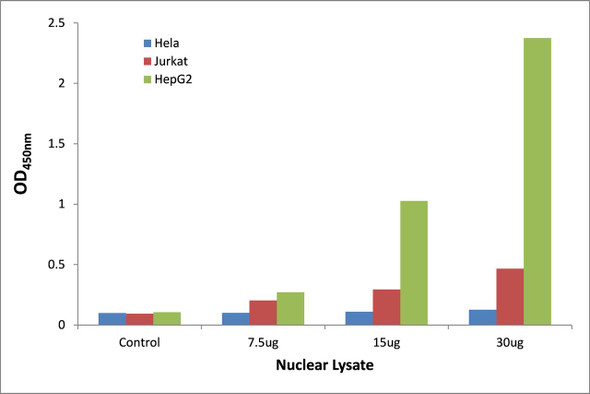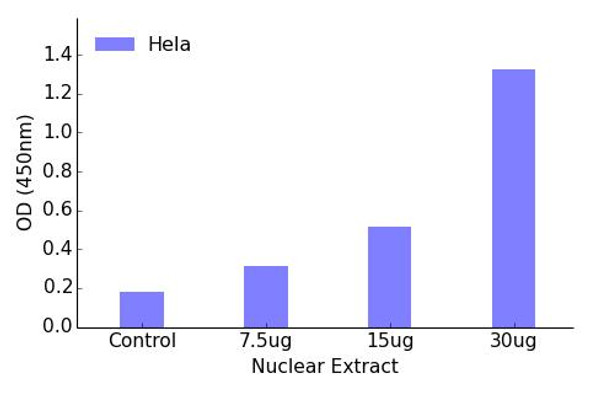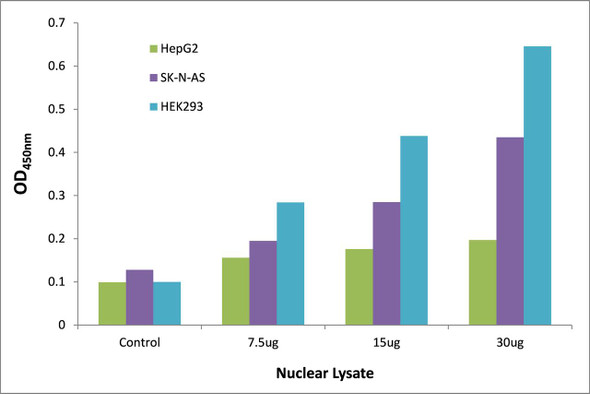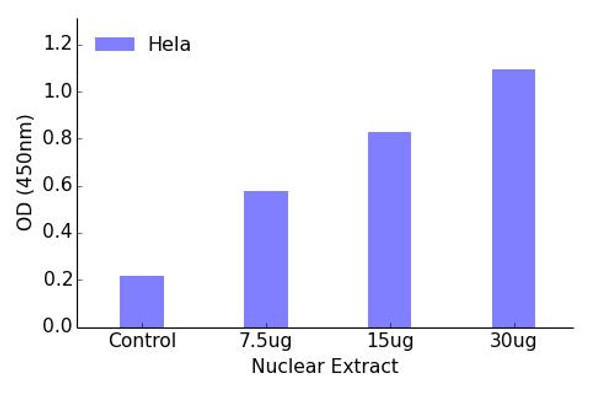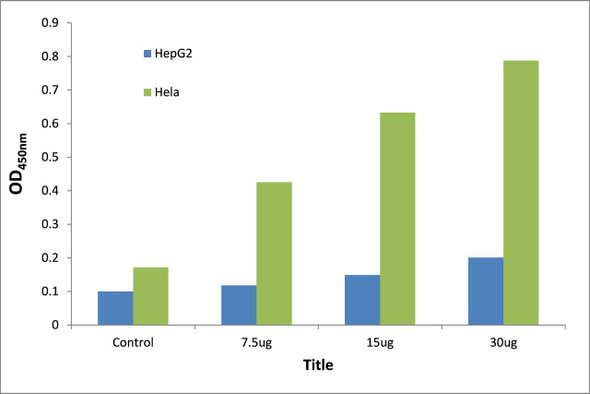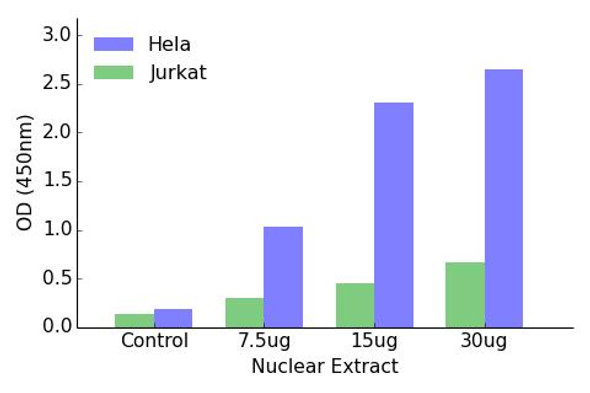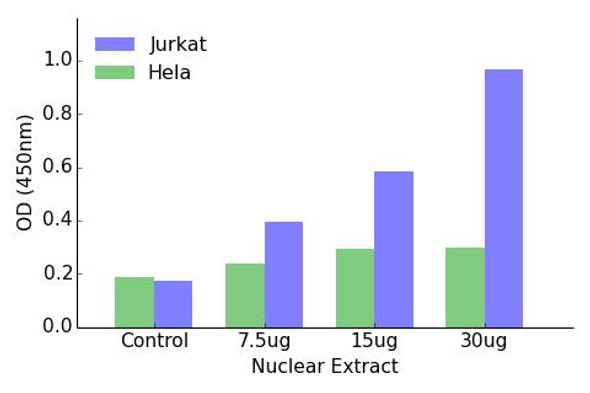DLX3 Transcription Factor Activity Assay
- SKU:
- TFAB00207
- Product Type:
- ELISA Kit
- ELISA Type:
- Transcription Factor Assay
- Analytes:
- DLX3
- Reactivity:
- Human
- Mouse
Description
DLX3 Transcription Factor Activity Assay
The DLX3 Transcription Factor Activity Assay Kit is specifically designed for the detection and measurement of DLX3 transcription factor activity in various biological samples. DLX3 is a key regulator of gene expression and plays a crucial role in the development and differentiation of various cell types.This assay kit offers high sensitivity and specificity, providing accurate and reliable results for research purposes.
It is suitable for a wide range of applications, including studying the role of DLX3 in various diseases and developmental processes.By utilizing this assay kit, researchers can gain valuable insights into the function of DLX3 and its impact on gene expression, providing important information for further research and potential therapeutic interventions.
| Product Name: | DLX3 Transcription Factor Activity Assay |
| Product Code: | TFAB00207 |
| Target: | DLX3 |
| Reactivity: | Human, Mouse |
| Sample Types: | Nuclear or cell lysates |
The Assay Genie DLX3 transcription factor activity assay allows for the detection and qualitative analysis of endogenous levels of activated transcription factors in a variety of nuclear and cell lysates
Assay Genie ELISA kits are designed to significantly reduce experiment time and ensure sensitivity and flexibility for high-throughput screening.
| Assay Time: | 4.5 hours |
| Detection Method: | Colorimetric 450 nm |
| Size: | 12 x 8-Well Microstrips |
| Storage: | 4°C for 6 months |
| UniProt Protein Function: | DLX3: Likely to play a regulatory role in the development of the ventral forebrain. May play a role in craniofacial patterning and morphogenesis. Defects in DLX3 are a cause of trichodentoosseous syndrome (TDO). TDO is an autosomal dominant syndrome characterized by enamel hypoplasia and hypocalcification with associated strikingly curly hair. Defects in DLX3 are the cause of amelogenesis imperfecta type 4 (AI4); also known as amelogenesis imperfecta hypomaturation-hypoplastic type with taurodontism. AI4 is an autosomal dominant defect of enamel formation associated with enlarged pulp chambers. Belongs to the distal-less homeobox family. |
| UniProt Protein Details: | Protein type:DNA-binding; Transcription factor Chromosomal Location of Human Ortholog: 17q21.33 Molecular Function:transcription factor activity Disease: Amelogenesis Imperfecta, Type Iv; Trichodentoosseous Syndrome |
| NCBI Summary: | Many vertebrate homeo box-containing genes have been identified on the basis of their sequence similarity with Drosophila developmental genes. Members of the Dlx gene family contain a homeobox that is related to that of Distal-less (Dll), a gene expressed in the head and limbs of the developing fruit fly. The Distal-less (Dlx) family of genes comprises at least 6 different members, DLX1-DLX6. Trichodentoosseous syndrome (TDO), an autosomal dominant condition, has been correlated with DLX3 gene mutation. This gene is located in a tail-to-tail configuration with another member of the gene family on the long arm of chromosome 17. Mutations in this gene have been associated with the autosomal dominant conditions trichodentoosseous syndrome and amelogenesis imperfecta with taurodontism. [provided by RefSeq, Jul 2008] |
| UniProt Code: | O60479 |
| NCBI GenInfo Identifier: | 3913487 |
| NCBI Gene ID: | 1747 |
| NCBI Accession: | O60479.1 |
| UniProt Secondary Accession: | O60479,B3KQL6, |
| UniProt Related Accession: | O60479 |
| Molecular Weight: | 31,738 Da |
| NCBI Full Name: | Homeobox protein DLX-3 |
| NCBI Synonym Full Names: | distal-less homeobox 3 |
| NCBI Official Symbol: | DLX3 |
| NCBI Official Synonym Symbols: | AI4; TDO |
| NCBI Protein Information: | homeobox protein DLX-3 |
| UniProt Protein Name: | Homeobox protein DLX-3 |
| Protein Family: | Distal-less-like protein |
| UniProt Gene Name: | DLX3 |



